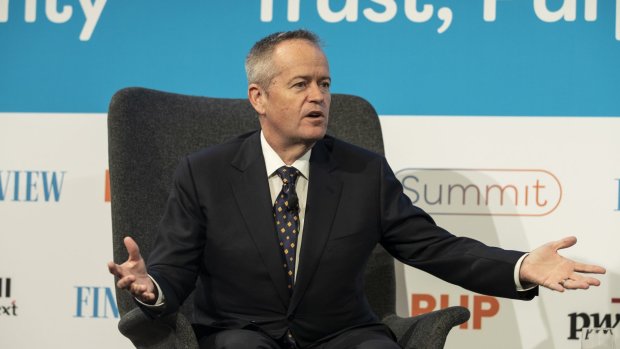This week the Prime Minister got his wish.

On Wednesday we learned Australia was actually already in a recession, at least as measured by economic growth per head.
The release of the national accounts revealed growth per head of population had declined for the previous two quarters, ie the country was in a "per capita" recession. Somehow this result came as shock to the Reserve Bank — but it shouldn't have. Anyone who's spoken to a small-business owner in the last few months could have predicted such an outcome.
In response to the national accounts, the Coalition claimed that a statistical measure few people have ever heard of, "real net national disposable income", was a better indicator of the economic conditions. (Hopefully the government won't try to put that on car bumper stickers.) Meanwhile others tried to claim that declining growth per head wasn't really a "real" recession.
What's been ignored over the last few days amidst all the talk of a recession is the statement from the Australian Bureau of Statistics that government expenditure "was the main contributor to growth in the quarter, due to increases in social benefits to households from continued government spending on disability, health and aged care services".
In other words, over the last three months the main reason the economy got bigger was because the government got bigger.
The irony for Scott Morrison and the Treasurer Josh Frydenberg, although of course they can't acknowledge it, is that if the economy is in a recession their chances of being re-elected actually increase. The Coalition consistently outpolls Labor on the question of which party is better at managing the economy.
Something else that's been largely ignored is the speech to the Summit from the leader of the opposition, Bill Shorten the day after the PM. Shorten said he wanted to make the next election "a referendum on wages". What he didn't say was how higher wages were going to be paid for — but then again perhaps in the context of the $200 billion in extra taxes he's promised to implement if Labor wins office, he didn't need to.
Under the Coalition, economic growth has been fuelled by higher government spending and higher taxes — which is presumably how Labor believes it can fund its promise of higher wages.
The problem with Labor's approach is that so many of the assumptions upon which their policies are based are wrong.
For example, Shorten claimed "inequality is at historic highs". This simply isn't true. The high taxing and high spending of successive Labor and Coalition governments has resulted in the country creating a welfare state in which inequality is low and declining.
Then from the opposition leader came the statement that stagnant wages are "proof that leaving it to the market leaves Australians struck in working poverty". Wages and conditions in this country have hardly anything to do with the free market. According to the World Economic Forum, Australia ranks 105 out of 140 countries for flexibility of wage determination and 100 for "flexibility of hiring and firing workers".
Similarly Shorten said that many Australians are "trapped" in labour hire arrangements and that "insecure" work and rates of casualisation have increased. Again this is simply not true.
In his submission to the Victorian government's inquiry to the On-Demand Workforce, John Lloyd, a former Commonwealth Public Service Commissioner, pointed that a recent CSIRO study found that 88 per cent of people working as freelancers would continue freelancing even if they were offered a full-time position.
The percentage of the workforce in a "casual" employment arrangement, defined as one without entitlements, but which may be compensated by "casual leave loading", in 1997 was 24.18 per cent. In recent years the share of casuals in the workforce peaked in 2004 at 25.72 per cent, and in 2017 that share was 25.08 per cent.
Unfortunately for the future of Australia's prosperity, it increasingly looks like Labor has created its industrial relations according to an alternative reality based on Trump-style alternative facts.
No comments:
Post a Comment